
A brief note about this version
This working proposal was submitted at the end of the first unit of the MA in digital art (November 2004). It should be noted that a number of sections will be revised, and possibly dropped, at the next draft due to the vast scope of the research outlined in this version. It is my aim to reduce the amount of historic research outlined in this version and narrow the study to early history iconology examples and later 20th/21st Century examples.
MADA 1 essay paper. Title: Iconology in digital art
Author: Colin Eyre. Created: 25.9.2004. Last modified: 3.11.2004
Contents
Aims
Aims
- Investigate how iconology is used in digital art, graphic design and within the media
- Investigate if icons can be universally interpreted
- Examine social and cultural bias that may affect our understanding of icons
- Question the understanding of digital artists, information architects and designers in their use and development of icons
- Question peoples understanding and interpretation of icons
Objectives
The objective of my proposal is to show the types of iconology that are effective in communicating ideas. Icons can be used to represent ideas in the digital arts, as well as in commercial and business communications such as web sites, presentations and videos.
Webster's Online Dictionary defines iconology as:
n. 1. The discussion or description of portraiture or of representative images. Cf. Iconography.
Philip M Parker. 2004. Definition: ICONOLOGY.
Webster's online dictionary (The Rosetta edition).
Available from
http://www.websters-online-dictionary.org/definition/english/ic/iconology.html
[Accessed on 25 September 2004]
While Lexico's online dictionary defines iconology as:
Noun 1. iconology - The branch of art history that deals with the description, analysis, and interpretation of icons or iconic representations.
Dictionary.com/Iconology. 2004. Lexico Publishing Group, LLC.
Available from
http://dictionary.reference.com/search?db=*&q=iconology
[Accessed on 25 September 2004]
In addition, Webster's also defines the related area of iconology as:
Noun
1. The study of representative art in general.
2. The art or representation by pictures or images; the description or
study of portraiture or representation, as of persons; as, the Noun
Philip M. Parker. 2004. Definition: ICONOGRAPHY.
Webster's online dictionary (The Rosetta edition).
Available from
http://www.websters-online-dictionary.org/definition/english/ic/iconography.html
[Accessed on 25 September 2004]
In order to show how iconology is effective I first need to establish the historic development of iconology; from early tribal beginnings to global mass communication.
I will define each term discussed in my final paper in the context of visual examples and a multimedia installation. These works will include an examination of the origins of iconology from early aboriginal cultures, such as native American Indian cultures and pre-iron age Celts, through Egyptian pictograms and the religious iconology of the middle-ages. I will also examine how myths and folklore have influenced the development of iconology in different cultures.
To establish a relationship between historic and modern iconology, I will trace the historic route from colloquial iconology to global iconology and determine if the two can be directly linked. I will also document, where possible, major historical eras of growth and development of iconology, placing today's icons in the context of these key moments in time. For example, the use of an acceptable iconic language employed in the industrial revolution has been mirrored in the recent Internet boom. I will examine the new iconic language that has developed on the World Wide Web and in mobile communication through the lens of past changes in iconography that occurred during periods of economic growth.
In the process I also want to examine clear definitions (and examples) of the differences between iconology (the graphical representation of a concept) and iconography (described as a set of symbols and allusions, or the study and of icons that can convey complex ideas). In addition, there are a number of related areas that I will also provide definitions for as well as examining and inter-relationships with iconology (for example, semiotics, symbol, logo, totem, emblem, orthography and pictogram).
Rationale
The word icon is interpreted in many different ways. To some it is a pictogram, others may describe it as a navigational image on a web site, while the media use it to describe actors, musicians, or political world leaders. In a sense, the term icon has been so overused that its real meaning is blurred.
Working with development teams in designing multimedia, computer-based training and web projects for more than eight years has led me to recognise that designers often misconceptualize the relationships between user interfaces and iconic navigation. Most designers have little or no direct experience in the area of iconology. I have seen designers produce a range of elements, from idiosyncratic or whimsical iconic designs to outright unusable and intangible elements.
Designers often design in a vacuum, separated from end-users, taking no steps to seek third party advice on the usability of their iconic images. I myself have been guilty of this practice, but experiences I have had dealing with people who have cognitive, motor or visual-impairments has forced me to re-evaluate the way I plan, use and design icons.
My own critiques and reviews amongst digital artists and graphic designers have, in the past, been locked in stalemate due to issues of design ownership or lack of a suitable language or framework of reference when debating icons. I now recognise the need to move away from icons that are personal in their execution, gravitating towards a more balanced evaluation of the value of an icon or symbol for its universality/appeal to end-users. This also reiterates one of my key aims - can icons be universal in their interpretation?
Example 1:
A variety of icons (shown below) used to represent a search or find function within a number of web sites.
![]()
If the context is unclear or new to a viewer, then the meaning of the symbol may be unclear. In the example below the magnifying glass does not represent a find function, but signifies that the physical pixel size of an image may be increased.
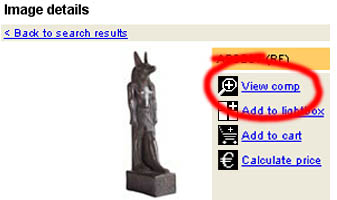
Designers, digital artist and technology developers can no longer afford to make sweeping assumptions regarding how people interpret their iconic representation.
I firmly believe at a time when people are bombarded with so much information, that iconology is a hugely untapped resource, in the digital arts, for helping people to grasp and understand complex tasks, concepts, and actions required by today's new media and digital interfaces. Digital artists, designers and information technologists would benefits greatly by understanding how iconology can enhance their work and communications.
Consider the scenario of a person who wakes up when a digital alarm clock goes off, microwaves cereal for breakfast, makes a call on a mobile phone, drives to work listening to a digital in-car stereo and using an in-car digital dashboard, then arrives at work to enter a security password into a door keypad. This person has already interacted with six digital interfaces before even starting up an office computer, logging into the company network, opening the company's MIS systems, checking emails and browsing the web. A good understanding and use of iconology enables this person to complete all of these tasks without new digital interface was met. Icons should help to remove any ambiguity of the concepts they represent not add another layer of misunderstanding.
Icons in digital arts should help to add clarity to the concepts they represent not add another layer of misunderstanding.
I propose to investigate how iconology is represented and interpreted in digital arts and the media. With the growth of the Internet into a recognised media channel it is now more relevant than ever that the designers and creators of icons are aware of the impact and limitations an icon can have.
As part of my research into the universality of icons, I will ask if digital artists and designers need to create different iconology for people with disabilities, such as visual impairments, cognitive impairments or motor difficulties. I will examine the way iconology affects our understanding and reinforces cultural bias. I will investigate if iconology creates ambiguity or adds clarity to a message or concept.
Outcomes
For my final paper and presentation I want to show how icons in our society are interpreted and how that can help convey complex and useful concepts and messages. I also want to highlight a number of issues, misconceptions and assumptions surrounding iconology.
The main idea I want to establish is how digital artists, designers and information architects can use iconology to help others grasp and understand their work, messages, communication or concepts.
I want to present a multimedia presentation that will be broken into two distinct parts. The first part will contain the results, and comments, gathered from an online survey and questionnaire. The second part will consist of an interactive presentation consisting of video, imagery, Flash and Director content that will explore and challenge the viewer on their own ideas regarding what iconology is and what it represents.
The multimedia presentation will support and illustrate the issues and arguments raised in the final paper. I will present icons that have been developed without a lot of thought for the end user as well as examples created with a more universal appeal. In addition, I will take examples from the media to demonstrate how icons can affect our bias or interpretation of an image or argument.
Media
As this proposal aims at uncovering ambiguity and bias in the interpretation of iconology I will be using the Internet to employ a series of online polls and questionnaires to as wide a target audience as possible in order to gather empirical data regarding iconic representations.
A web site will be set up and the URL will be passed to immediate friends and associates who in turn will refer the site on to other international contacts. It is vital that the results will be based on the widest target as possible as one of my key aims is to examine if icons can be universally understood. If the people polled only contribute from a small or local area then the results will be too subjective. Hence the need to get as wide an audience of contributors as possible.
All data will be captured into an online SQL data and result will be mined fro inclusion into my final paper and exhibition. The site will be developed using Flash, Dreamweaver, HTML, JavaScript, PHP and MySQL.
I also want to build a database of words and terms relating to iconology. I plan to use the content of this database both in the web site and the final exhibition.
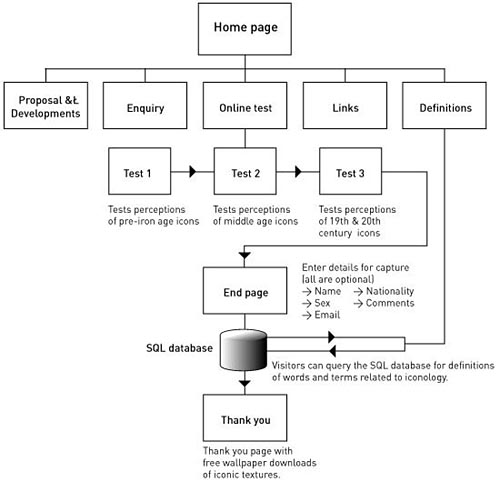
Figure 1. Flat site structure for the iconology web site
The initial site is planned to be small and concise with ongoing information being added to a development section. Participants will be asked to take part in an online test in their perception of different icons. There will be three separate test areas in total; the first will contain icons from pre-iron age cultures, the second will contain icons from the middle ages and the final part will contain icons from the 19th and 20th century.
The design will pull icons from various cultures and historic references.
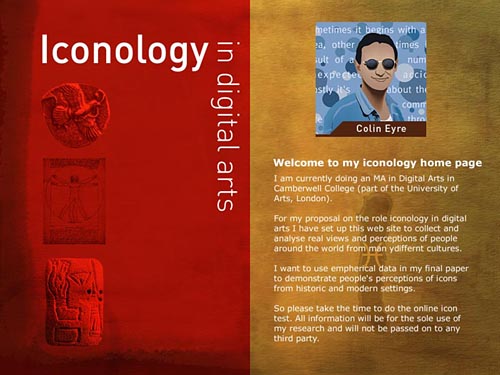
Figure 2. The home page for my online iconology web site
The test page will need to be simple and clean in layout to avoid any confusion between the iconic elements being presented for the test and the site interface. One scenario I am proposing at this point is as follows:
- Participant starts with the 1st test area
- They will be presented with 8 to 10 individual test pages in each of the three areas
- An icon will be presented at the top of each page
- Participants are asked to match a list of predefined answer
- They can only select one answer
- If one of the option cannot be matched or the participant does not know the answer, then they will select a 'do not know' option
- The participant then clicks the "submit Answer" to send their selection and proceed to the next test page
NOTE: at this point I have not fully decided if the answers should be pre-defined (as shown in figure three below) for the participants, or if an open text box should be employed. I perceive a small number of people will need to be polled in a pre-launch feedback session to test any usability issues regarding the web site. I am also aware that this form of research (i.e. survey) will in itself not reveal the origins or cause of cultural/socio bias or preferences to certain icons.
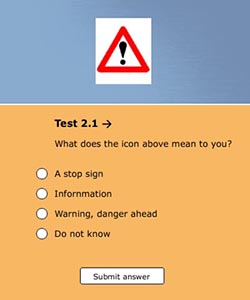
Figure 3. Suggested scenario for a sample test page from the online iconology web site
For my final exhibition I plan to use all questionnaire data captured in a multimedia installation. Viewers can partake in a real-time questionnaire as well as being challenged on various juxtaposed images and icons. I will also use the results of all web-based tests carried out to support my aim of examining if icons are universal in interpretation or affected by cultural bias.
I will include all the various iconic examples from different cultures and eras used in the online questionnaire within my final presentation.
I will set a number of key questions and video a broad number of people on their understanding of icons. Their answers will be presented as digital video within the final presentation.
For the exhibition material I will use a number of design tools such as Photoshop, Flash, Freehand, Director, ProTools (for accompanying soundtrack), Premiere, Typographer and Illustrator to collect and present various iconic examples.
For the example below I will ask the viewer if icons can bias our perception of an image and can they project a value or concept over an image. This hopefully will open up the question; are icons neutral or do they project a bias and cloud or simplify our perceptions.

Figure 4a. A sample image suggested for the final exhibition that combines an image and a swastika icon.
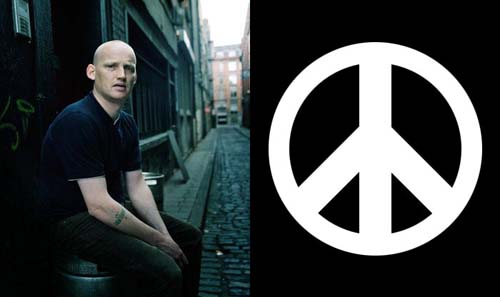
Figure 4b. The same sample image is shown but this time the icon suggests a supporter for global disarmament.
If the images above indicate that icons can overtly bias our judgement and present a one-sided view, then can iconology in digital arts affect our perception in a positive or negative way. Is the designer or digital artist projecting his or her own values or can they remain neutral and let the viewer draw their own conclusions.
For the final multimedia presentation I plan to use Flash and Director to present all the content. However I will need to use additional programs to create the content, including Premiere (or Final Cut) to capture and edit video, ProTools to record, edit and format audio, a number of graphic tools (PhotoShop, Painter, Illustrator and Freehand) to create, edit and montage imagery and possibly some third party utilities to extend the functionality of Director (I may need to allow Director to talk to a database to track all interactive questions to be tracked in real-time and allow for results to be presented too).
Methodologies
For research I will be reading and referencing the works of various writers such as Carl Jung's writings on collective unconsciousness, and Man and his Myths, Salome Schmid-Isler's paper on the semiotic investigation of style and Iconology on the World Wide Web, W. J. T. Mitchell's book titled Iconology as well as Erwin Panofsky's many books concerning iconology in the arts. For digital media I will be examining a number of publications on human interface designs (published by many software developers including Apple) as well as the work of digital artists.
Most of the early published work relating to iconography is religious in nature (and a large amount of information deals specifically with early religious iconography). These works may be necessary to establish a historic reference for modern uses of iconology to show how we have arrived at the current use and understanding of icons.
There are also a number of papers published in academic magazines (Digital Creativity, for example) that discuss the uses and benefits of icons in education; especially where employed in teaching students with cognitive issues like dyslexia (defined as a learning disability characterized by reading difficulties that may also affect writing, spelling, or working with numbers).
I also plan to use a number of publications and online resources in my research. These will include:
- C.G. Jung. The Archetypes and the Collective Unconscious. 1968. (2nd
edition).
Routledge, London. [ISBN: 0-415-05844-9] - C.G. Jung. Man and his symbols. 1978.
Picador, London. [ISBN: 0-330-25321-2] - W.J.T. Mitchell. Iconology - image, text, ideology. 1986
The University of Chicago Press. [ISBN: 0-226-53229-1] - Erwin Panofsky. Studies in Iconology: Humanistic Themes in the Art.
1972
[ISBN: 0-064-30025-0] - Christian F. Feest. Native Arts of North America. 1992 (Updated edition)
Thanes and Hudson, London. [ISBN: 0-500-20262-1] - Ross Woodrow. January 1999. Iconography and iconology - image analysis.
The University of Newcastle, Australia.
Available from
www.newcastle.edu.au/discipline/fine-art/theory/analysis/iconintr.htm
[Accessed 20 September 2004] - Ross Woodrow. January 1999. Analysis of visual images.
The University of Newcastle, Australia.
Available from
www.newcastle.edu.au/discipline/fine-art/theory/analysis/analysis.htm
[Accessed 20 September 2004] - Ian F. Verstegen. May 2004. Cognitive Iconology.
Available from
http://astro.temple.edu/~iversteg/cognitive_iconology.htm
[Accessed 20 September 2004] - Daniel Chandler. September 1995. Semiotics for Beginners.
University of Wales, Aberystwyth
Available from
www.aber.ac.uk/media/Documents/S4B/semiotic.html
[Accessed 20 September 2004]
Risk assessment
For the final presentation the computer screen must be placed on a solid and secure table or pedestal to avoid falling or been tipped over. All cables required will need to be routed to the back of the presentation stand to avoid people tripping over and falling. If a mouse is employed in the final presentation then it may be prone to being removed, so I may need to look at the option of using a touch screen to avoid this. The room where the presentation is being placed will need to display all emergency exits clearly in case of a fire or other hazards.
Timetable
Research will continue from now until the middle of 2006.
The design and implementation of the questionnaire will be as follows:
- Design of the web site to be completed by March 2005
- The development of the online SQL database to be completed by May 2005 (this includes all testing of the database and the code procedures)
- Initial usability testing of the site to be completed in May 2005
- The launch of the web site will start in June 2005
Results from the web site questionnaire will be examined around May 2006 and these results will be used in the final presentation.
Gathering of examples of iconology has already begun and will continue till May 2006.
The design and implementation of content for the final presentation will be as follows:
- Concepts for the structure of the presentation will begin in June 2005
- Initial interface designs and navigation will start in July 2005
- Writing of content for the presentation (including the video questionnaire) will start in July 2005
- The initial working model of the presentation will start in July 2005 and be developed all the way through to may/June 2006 before the submission of the final presentation to Camberwell
- Audio recording of soundtrack will start in early 2006 (initial composition themes and rough ideas will be outlined at the end of 2005)
- Video questionnaires will be carried out from August 2005 through to March 2006
- Peoples views and comments from the video questionnaire will be edited in a video application from April 2006
- Design of the presentation stand/display will need to start in early 2006 to allow time for any fabrication
- Installation of the presentation at Camberwell college will need to take place possibly a week in advance of the presentation date